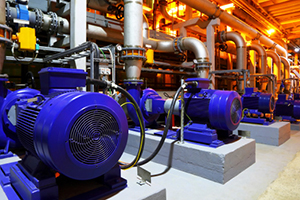Sustainable Manufacturing: Interview with Nancy Diaz
Sustainable Manufacturing: Interview with Nancy Diaz
By Katie McKinstry, Graduate Student Researcher, University of California at Berkeley

At the University of California at Berkeley, we are studying sustainable manufacturing at many levels. We consider sustainability at the enterprise level, to the factory scale, all the way down to a specific process. In an interview with PhD student Nancy Diaz at the University of California at Berkeley, she talks about her experience researching factories that specialize in machining.
Tell us about the evolution of your sustainable manufacturing research?
When I first started, I worked on the process level. I was interested in machining, production equipment, and how we can make them more sustainable. I found that one element had not been considered; energy. There was a lot of effort put into characterizing process, but not the equipment as a whole. As I was working on this, I saw that they did not work independently. I found that timing is a big piece of the puzzle, which is why I expanded my scope to include the factory level. It is within process planning where we can have the biggest impact on energy, and process planning includes machine tool scheduling.
What can manufacturers do to address their energy use and environmental impact?
I am looking at energy from the perspective of a manufacturing facility, and not a product designer. But interestingly, many of the decisions that affect energy, like how the product has to be made, are determined upfront by the designer. There may be common steps, such as making a metal piece. There are many different types of equipment that can perform that operation and provide the same function but differ in terms of environmental impact.
One can look at factory scheduling, such as turning production on and off, or deciding where products get routed. Production facilities can be organized by processes or by product line. Scheduling is particularly interesting in factories that have multiple machining centers. Before, process planners did not take into account energy consumption of machine tools. This field has just developed within the past few years. Now we know we can rank the environmental impact of machine equipment and turn off some of the worst performers some of the time. Looking at equipment, many times, factories will have a broader plant perspective, and may already be measuring overall energy and resource consumption. But they do not know, within the factory walls, which machine is consuming what. So it can help to characterize different parts of the facilities. You can measure in real time, with watt meters, for example, and get real time data, energy in particular.
What are some “low-hanging fruit” opportunities for manufacturers to reduce their energy and environmental footprint?
It depends on the customer. Machine tool manufacturers want to know how products they are making function, which can highlight areas to save resources. Also the degree to which a manufacturer is ready to implement improvements affects their options. If they are not already taking measurements then that would be the first place to start.
For small to medium manufacturing companies, some quick and easy things to begin with include: recycling chips from machining and, coolant recycling, either onsite or offsite. This can lead to a substantial savings because you will save on the cost of disposing hazardous waste. That is actually a really easy one, and a lot of [manufacturers] don't realize how easy it is.
You do not necessarily have to upgrade to the newest and greatest piece of equipment. You can use more sophisticated tools, such as coated tools or different materials that allow you to implement high speed machining. This can save on processing time as well as, save money on overtime. Also, I recommend having a good relationship with your cutting tool supplier, as they can have great advice on cutting tool paths. Companies like Sandvik and Kennemetal have great customer support to help reduce tool path. Unfortunately, a lot of people just use default settings, however, you can realize significant long-term cost savings by investing in better, and sometimes more expensive, tools up front while setting up efficient tool paths.
Describe a case study of improvements you have made in the factory?
A while ago I was working with at a factory of a major machine tool manufacturer. At first, they thought they were out of solutions for making lighting more efficient. But in my study, I expanded the scope of where they looked for lighting solutions. We found a quick fix that resulted in a 50% saving in lighting energy consumption. Also, compressed air presents another opportunity for savings. Companies may be overwhelmed by size of compressed air piping, but they should know that areas like maintenance are important. 30% can be lost if compressed air is not properly maintained, so a device to detect leakage will pay for itself instantly.
There are resources that manufacturers can take advantage of when looking to make improvements; the Department of Energy and the Energy Information Administration have excellent information. Their websites are great place to start in determining how you can improve your manufacturing site and also familiarizing yourself with life cycle assessment.
Within process planning, the biggest impact was machine tool scheduling. How did you decide that?
I looked at it from the perspective of a manufacturing facility and not a product designer. Product designers can dictate what type of features to have on its product and the material extraction piece is something that is also significant. But since that is dictated by the product designer, a manufacturing facility has the job of figuring out how to actually make it.
So, for example, making a metal part, maybe it will involve something like casting the initial workpiece, milling or turning, heat treatment, possibly grinding as a finishing process. Those are just basic steps to manufacturing a metal piece. And, because there are so many different types of pieces of production equipment, milling in particular, for example, they all provide these same functions, but in terms of their environmental impact, they are all very different. As a facility, you can at least choose to schedule your machine tools accordingly. Scheduling would involve turning on and off machine tools. Now, a manufacturing facility will probably have only one piece of equipment that allows for casting, but a lot of machine tools on their floor.
Learn more about advanced manufacturing concepts at the 2013 ASME Congress featuring the latest cutting-edge engineering research and innovation.



